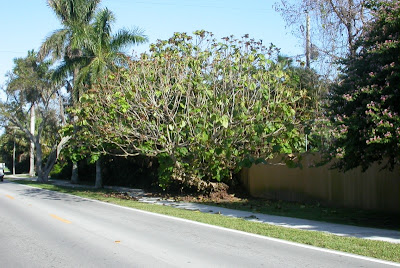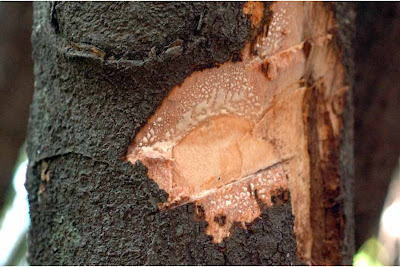Ficus hispida Linn. is a moderate sized tree found throughout the year and has become wild or cultivated for its edible fruit and the value of folklore. Traditionally, the different plant parts were used in the treatment of ulcers, psoriasis, anemia, jaundice, piles, vitiligo, bleeding, diabetes, seizures, hepatitis, dysentery, bile, and as lactagogue and purgative.
Classification :
Kingdom: Plantae (Plants)
Subkingdom: Tracheobionta (vascular plants)
Super Division: Spermatophyta (seed Produce)
Division: Magnoliophyta (flowering plants)
Class: Magnoliopsida (dashed two / dikotil)
Sub Class: Dilleniidae
Order: Urticales
Family: Moraceae
Genus: Ficus
Species: Ficus hispida L.
Ficus hispida Linn contains large variety of products bioactive phytochemicals from different groups such as alkaloids, carbohydrates, proteins and amino acids, sterols, phenols, flavonoids, gums and mucilage, glycosides, saponins and terpenes . Various scientific studies have been published to establish the scientific basis of traditional medicinal values attributed to Ficus hispida Linn.
Understorey tree to 17 m high and 25 cm dbh. Stem with white sap. Stipules ca. 18 mm long, hairy. Leaves alternate, simple, penni triple-veined, hairy below, the margin toothed. Fruits ca. 16 mm in diameter, yellow-brown, fleshy figures placed on long inflorescences that hang from the trunk or branches.
In addition, new pharmacological activities such as antineoplastic, cardioprotective, neuroprotective effects and anti-inflammatories have also been reported recently. So far, no work has been published to develop the characteristics of Ficus hispida Linn Pharmacognosy. This review is an effort to give a detailed account of Pharmacognosy and Phytochemistry her, and a comprehensive survey of its pharmacological activities.
We also try to establish the mechanism of action behind its pharmacology reported earlier. The magazine also looks at the approaches to formulating future delivery according to its lipophilic bioactive compounds, which is done to improve its dissolution in order to increase its bioavailability, and thus the associated pharmacological action.
In disturbed (open) dipterocarp, mixed and re-growth swamp forests up to 100 meters. In the alluvial sites and along rivers and streams.









No comments:
Post a Comment